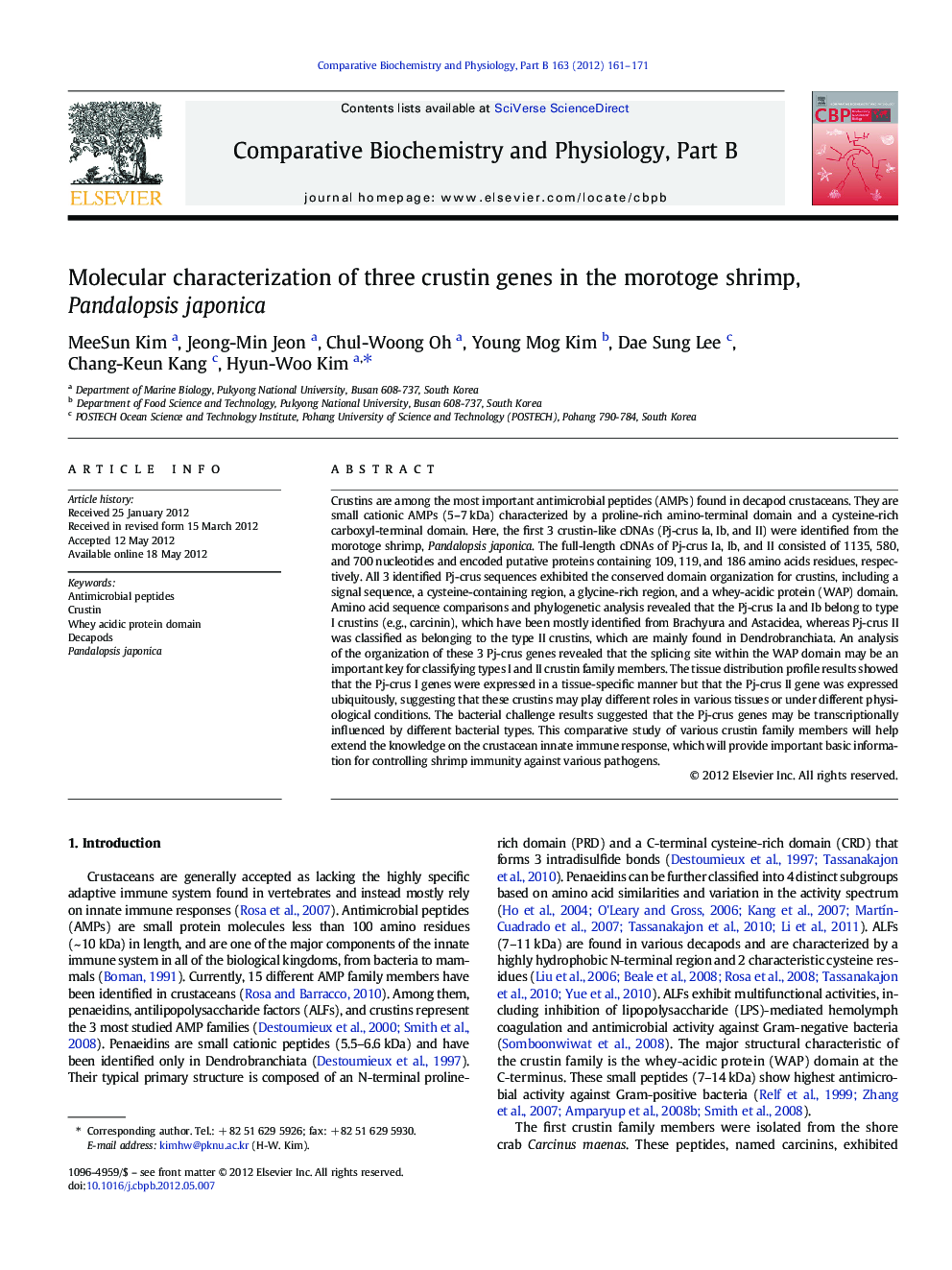| کد مقاله | کد نشریه | سال انتشار | مقاله انگلیسی | نسخه تمام متن |
|---|---|---|---|---|
| 1975458 | 1060628 | 2012 | 11 صفحه PDF | دانلود رایگان |

Crustins are among the most important antimicrobial peptides (AMPs) found in decapod crustaceans. They are small cationic AMPs (5–7 kDa) characterized by a proline-rich amino-terminal domain and a cysteine-rich carboxyl-terminal domain. Here, the first 3 crustin-like cDNAs (Pj-crus Ia, Ib, and II) were identified from the morotoge shrimp, Pandalopsis japonica. The full-length cDNAs of Pj-crus Ia, Ib, and II consisted of 1135, 580, and 700 nucleotides and encoded putative proteins containing 109, 119, and 186 amino acids residues, respectively. All 3 identified Pj-crus sequences exhibited the conserved domain organization for crustins, including a signal sequence, a cysteine-containing region, a glycine-rich region, and a whey-acidic protein (WAP) domain. Amino acid sequence comparisons and phylogenetic analysis revealed that the Pj-crus Ia and Ib belong to type I crustins (e.g., carcinin), which have been mostly identified from Brachyura and Astacidea, whereas Pj-crus II was classified as belonging to the type II crustins, which are mainly found in Dendrobranchiata. An analysis of the organization of these 3 Pj-crus genes revealed that the splicing site within the WAP domain may be an important key for classifying types I and II crustin family members. The tissue distribution profile results showed that the Pj-crus I genes were expressed in a tissue-specific manner but that the Pj-crus II gene was expressed ubiquitously, suggesting that these crustins may play different roles in various tissues or under different physiological conditions. The bacterial challenge results suggested that the Pj-crus genes may be transcriptionally influenced by different bacterial types. This comparative study of various crustin family members will help extend the knowledge on the crustacean innate immune response, which will provide important basic information for controlling shrimp immunity against various pathogens.
Journal: Comparative Biochemistry and Physiology Part B: Biochemistry and Molecular Biology - Volume 163, Issue 2, October 2012, Pages 161–171